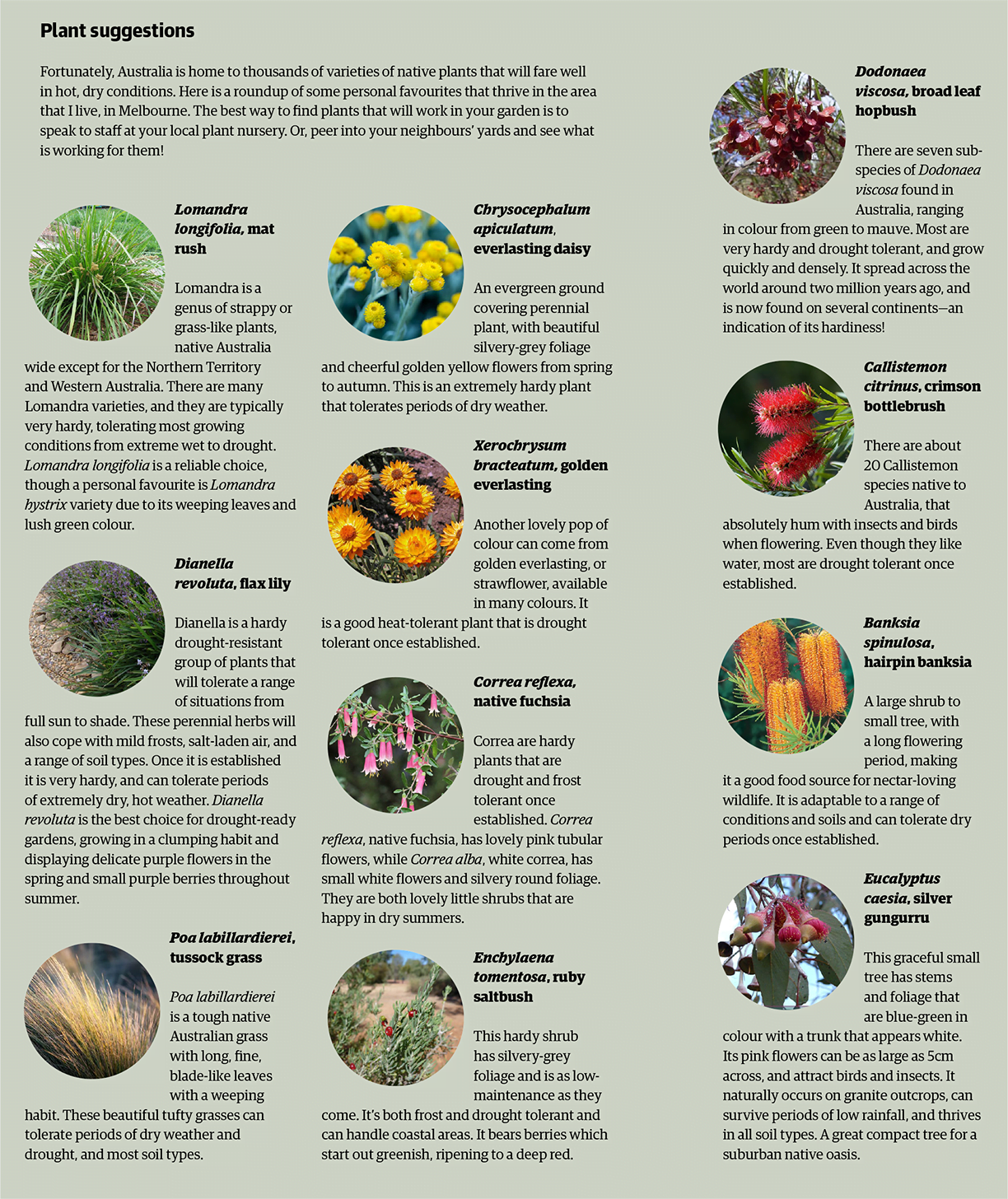Climate-ready gardening
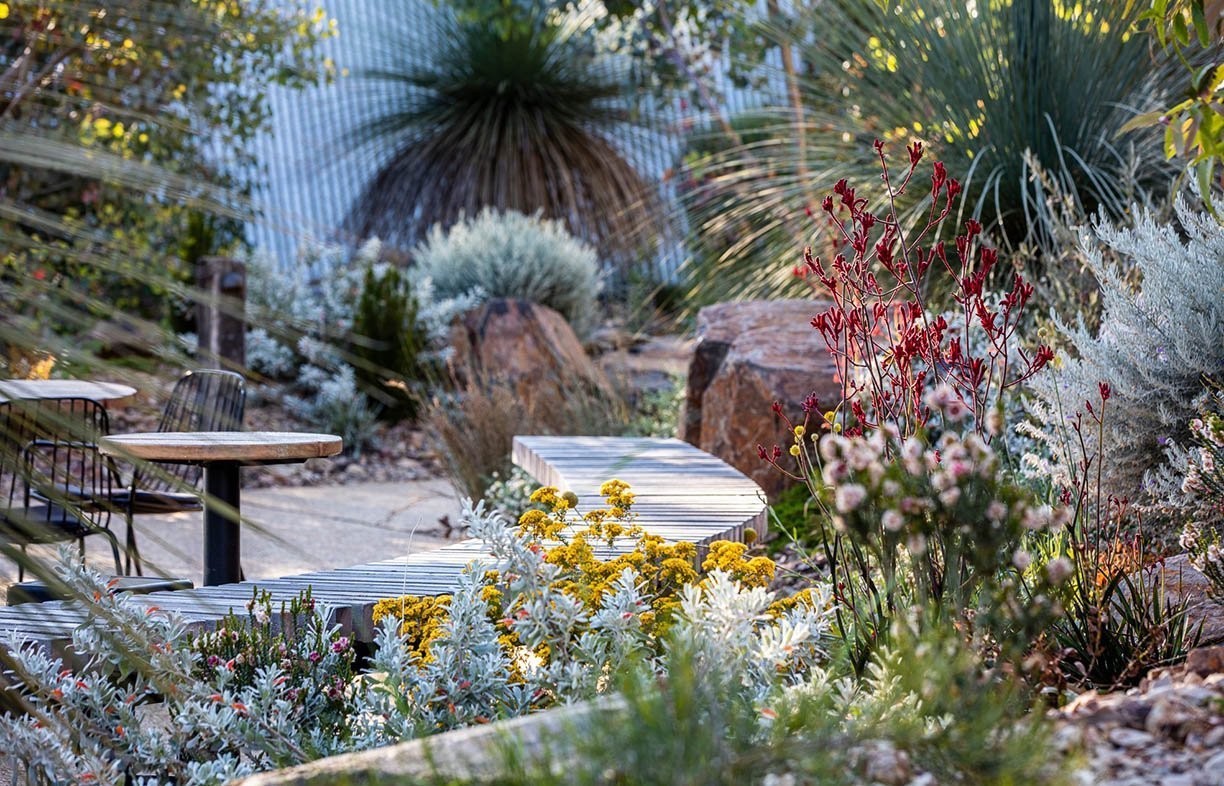
Jacqui Hagen offers some tips for water-wise gardens that will tolerate the hot, dry season ahead.
Every keen gardener has spent time pondering their idea of the perfect garden. Over the years I have settled on my own personal formula that consists of three main elements: food production, exotic flowering annuals and perennials for pollination, and areas of native climate-ready plants that support local biodiversity. Here, we’re focusing on the latter. As Australia’s weather shifts and we’re approaching a dry, hot summer, it’s time to start thinking about ways to make our gardens adaptable in periods of low rainfall.
1. Replace your lawn
Lawns require a huge amount of water to stay healthy and happy through Australia’s hot summers. It is not difficult to replace your lawn with beautiful native grasses and groundcovers, dramatically reducing water use as well as providing habitat for local biodiversity. The following steps are a great way to turn the oft-neglected suburban front lawn into a thriving native garden that will fare well during dry spells.
First you will need to remove the existing lawn. There are a number of ways that you can do this, but one of the most effective is to lay out some large sheets of cardboard with some bricks to lodge it in place, and let the lack of light kill off the existing lawn. It might take a few weeks or even a month, but it means that you won’t have to use any nasty herbicides. Once the grass underneath has browned off, you can remove the cardboard and get to work removing any remaining runners and roots.
Keep out the weeds! Next, it’s time for more cardboard. Make sure that any sticky tape or staples are removed, and spread it across the area, making sure that there are no gaps. Water it in well—this step is really important, as if you do not soak the area it can become hydrophobic, meaning that even in heavy rain water will not soak through an impenetrable layer. While the cardboard is still wet, it’s time to spread a layer of mulch or granitic sand. I am a big fan of granitic sand laid about 3cm thick, as it is the right density and makeup to create a great base for native gardens; fine enough that weeds will not grow through, and drying into quite a firm layer that native plants will love. Note that granitic sand is quite soft and workable before it has settled into place, and after that it becomes very hard—so it is worth getting all your steps done in a relatively short time.
The best part: Planting. Depending on where this area is in your garden, you may want to include a selection of groundcovers, grasses, shrubs and trees. Native grasses such Poa labillardierei, tussock grass, look great in this setting, as well as plants like Lomandra longifolia, spiny-head mat-rush, Correa alba, white correa and Enchylaena tomentosa, ruby saltbush. Xerochrysum bracteatum, golden everlasting and Brachyscome iberidifolia, Swan River daisy, give a lovely pop of colour and are incredibly hardy. As a feature you may choose something bird attracting like Callistemon citrinus, crimson bottlebrush, a Banksia spinulosa, hairpin banksia, or a Eucalyptus caesia, silver gungurru—just be wary of overhead powerlines and proximity to buildings when positioning your trees.
When planting, aim for an organic and natural look—soft curves and random placing to emulate native Australian bushland. Before long your old lawn will be a distant, boring memory.
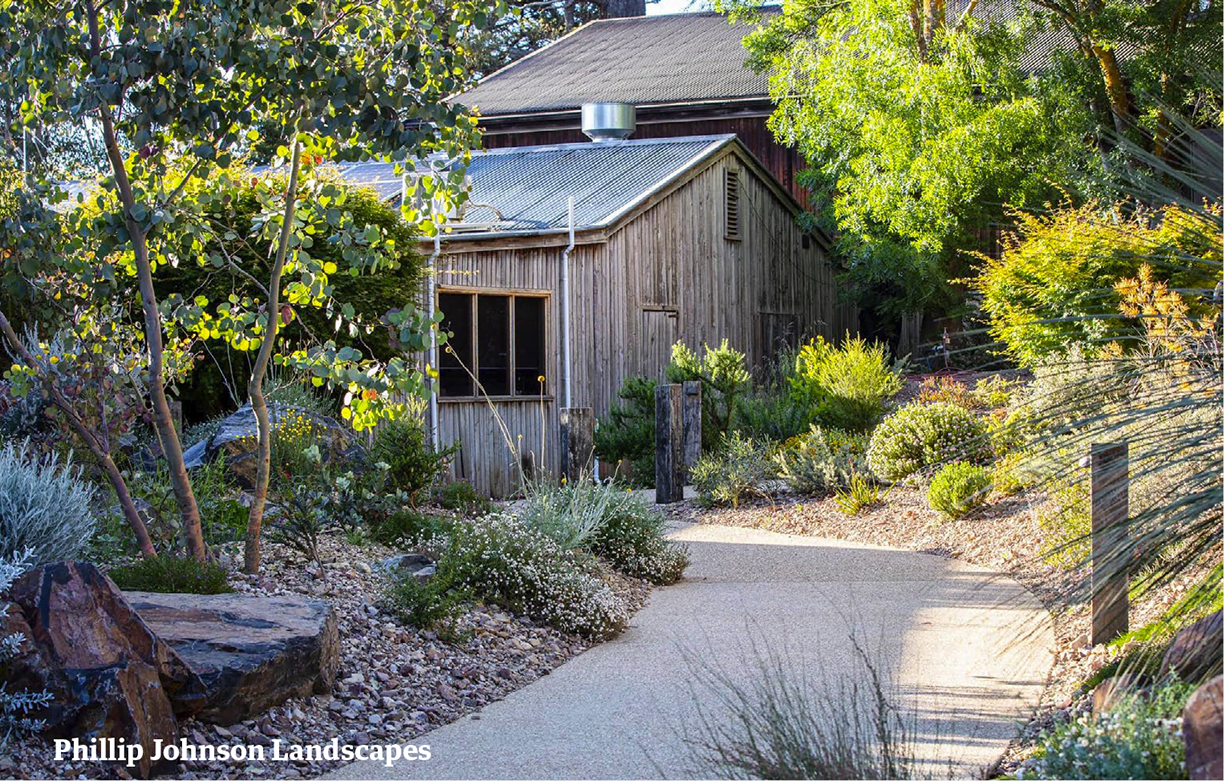 Replace your boring lawn with a hardy Australian garden that supports local biodiversity. Pictured here are examples by award winning garden-designer Phillip Johnson, who specialises in creating sustainable gardens that are climate-ready and provide habitat. While his amazing designs may seem out of reach, Phillip encourages people to do what they can, even in the smallest suburban yards. You can visit one of Phillip’s gardens in the Dandenong Ranges Botanic Garden in Olinda, on Wurundjeri Country. The garden features 15,000 plants from over 400 native Australian species, and showcases sustainable and water-wise design.
Replace your boring lawn with a hardy Australian garden that supports local biodiversity. Pictured here are examples by award winning garden-designer Phillip Johnson, who specialises in creating sustainable gardens that are climate-ready and provide habitat. While his amazing designs may seem out of reach, Phillip encourages people to do what they can, even in the smallest suburban yards. You can visit one of Phillip’s gardens in the Dandenong Ranges Botanic Garden in Olinda, on Wurundjeri Country. The garden features 15,000 plants from over 400 native Australian species, and showcases sustainable and water-wise design.
2. Feed your soil and cover up
In the warmer months it’s even more important to keep you soil covered with a nice layer of mulch, which stops water evaporating and helps to cool the soil around the bases of plants. When layering mulch in your garden, be sure to water in well at every step of the process.
Another way to make your garden more resilient in times of dry weather is to improve the health of your soil. Adding organic matter like compost not only improves moisture retention, but also attracts worms that help water flow through the soil.
3. When it does rain, notice where water collects
While it seems that Australia is heading for a period of hot, dry weather, we have seen in recent years that large amounts of rainfall can arrive unexpectedly in an increasingly uncertain climate. So while it is important to be mindful of periods of drought when designing a climate-ready garden, it is also critical to prepare for periods of intense rain.
A garden that I worked on throughout 2020 was underwater for six weeks in 2022, and sadly a lot of previously-thriving native perennials were lost. We set about digging trenches in an attempt to drain the area, but soon realised that a smarter approach would be to turn a standard flat front garden into one with topography—with peaks and valleys that directed water in periods of both wet and dry. Fortunately the wet soil at the time allowed this transformation to happen in just a couple of days, and the result was a series of seasonal ponds filled with native plants that can adapt to both very dry and very wet conditions. Here’s how you can make your own:
Firstly, take note of where the water is collecting in your garden. Is there an area that gets wetter than other areas? This is where your seasonal pond will be. Grab your shovel and get to work! We dug out two ponds in organic shapes, and the soil that we removed was used to shape banks for plants that are less tolerant of wet conditions. The ponds were connected by shallow swales, intended to direct water towards the ponds in periods of heavy rain. Your yard will likely look a complete mess at this point, and your boots are likely heavy with mud. But don’t give up, keep going!
It’s time to line your pond. We used a biodegradable liner that rolled out in long sheets. Remember—this pond is not meant to be watertight, but rise and fall along with the water table, and ideally draw water away from your house or the areas of your garden where you do not want water to collect. Next, fill the pond with a substrate like granitic sand, or fine pebbles. Try to choose a type that looks natural—no bleached pebbles!
We were fortunate that a neighbour had a pile of unwanted river rocks that we were able add to the ponds to give them more structure. I am wary about the origins of landscaping river rocks and as such was reluctant to buy them—you may get lucky on online swap sites or community marketplaces.
Time to plant! There are specific plants that enjoy periods of waterlogging as well as periods of dry. We planted Carex appressa, tall sedge, Amphibromus neesii, swamp wallaby grass, Lomandra hystrix, creek mat-rush, and the amazingly named Calocephalus citreus, lemon beauty heads.
It has been a year since we completed our topgraphical transformation, and it has been a joy to observe how a flat front yard can be turned into something interesting, diverse, and alive, that changes with the seasons. In winter it is a hideout for frogs, in summer it takes on the appearance of a dry riverbed.
Say no to plastic weed matting!
Plastic weed matting is truly awful stuff. It increases soil temperature and blocks the proper exchange of oxygen and carbon dioxide, it adds microplastics to your garden as it breaks down, it forms a layer that worms and insects cannot pass through, and it stops rain soaking through the soil. Use secondhand cardboard instead! It works just as well to block weeds, it allows water to pass through, and it will slowly break down. As a bonus, it’s free.
4. Decolonise your gardening
There is a lot that can be said on this topic, but at a very basic level—it’s just sensible. The best way that you can make your garden ready for dry summers is to look to what thrives naturally in the area where you live. Do research about the plants that are indigenous to your area, pay attention to what is growing in nearby bushland. This may mean letting go of your plans for a cottage garden full of delicate flowers and roses in favour of plants like banksias, acacias and flowering grasses. You’ll be happier watching your garden thrive rather than struggle, and the local birds and critters will thank you.
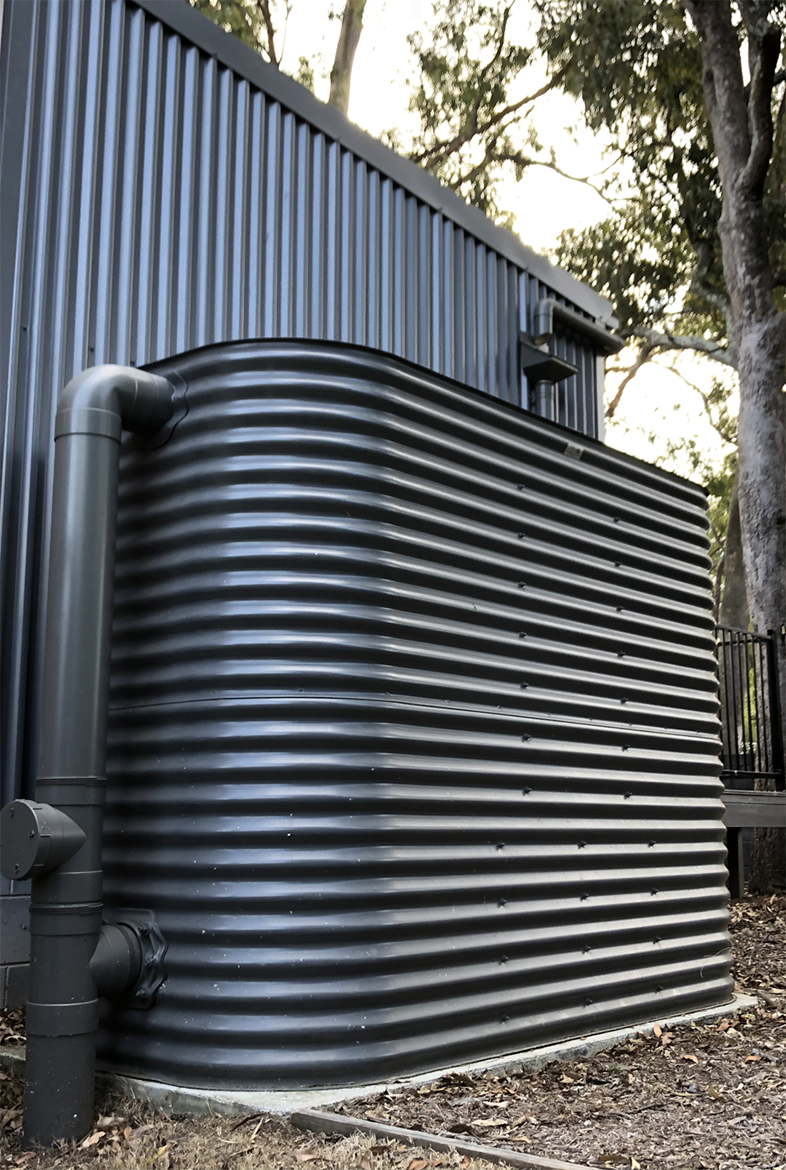
Residential rainwater tanks are an essential component of climate-resilient homes, especially in warmer and drier climates like Australia. Our partners at Kingspan give us five good reasons to invest in one.
1. Water conservation and sustainability: Residential rainwater tanks play a crucial role in conserving water resources. Australia has regular dry climate cycles with high levels of water scarcity. Rainwater harvesting allows homeowners to collect and store rainwater, reducing the strain on traditional water sources and ensuring a more sustainable water supply. As our cities get hotter we need to make better use of local water supplies to make our cities greener and cooler. Having an independent source of water in a bushfire and other natural disasters makes our cities more resilient too.
2. Mitigating drought impact: Australia frequently experiences drought conditions, which can have a severe impact on water availability. In a drought our dam catchments dry out and most rainfall doesn’t make it to the dam. Rainwater harvesting is much more efficient at capturing small rainfall events than dry catchments. Regular small rain events occur throughout droughts in our cities providing water directly to our buildings when we need it most. Rainwater helps households become more self-reliant during droughts by providing an alternative water source for non-potable uses like gardening, flushing toilets, and even laundry. This reduces the demand on municipal water systems and eases the burden on strained water infrastructure.
3. Rainwater efficiency: Rainwater is a highly efficient source of water. Rain falls on the roof of the building where it will be used, avoiding the transport costs of moving utility water from up to 100km away. Because a roof is a non-trafficable area there are few opportunities for contamination. Rainwater is considered very clean and little treatment is required for non-potable water uses. Finally, rainwater harvesting takes advantage of the natural water cycle to deliver water directly to your building, evaporation and condensation is driven by the sun’s energy and is free.
4. Stormwater management: Some of the most important benefits of rainwater harvesting are not related to water conservation and benefit the whole community as well as the building owner. Collecting rainwater reduces the volume of stormwater. In our urban areas hard surfaces direct fast flowing contaminated water into our local waterways, doing damage from even small rainfall events. Simply holding rainwater in a rainwater tank reduces nitrogen and sediment loads, reduces local flooding risks and protects stream banks from scouring, particularly from smaller rainfall events. Rainwater tanks are good for platypi!
5. Installation and space considerations: Installing a rainwater tank involves selecting an appropriate size and location and can be considered a design feature which adds about $18,000 value to a home. The required space varies depending on the tank’s capacity. Slimline tanks are ideal for properties with limited space, as they can be installed against walls or fences. Round tanks typically need more space but offer greater storage capacity. Proper installation ensures efficient rainwater collection and usage. Good design improves yield and water quality. There is good advice in the Rainwater Harvesting Australia Residential Design Specification. Ultimately, rainwater tanks not only address the challenges posed by warmer and drier temperatures but also empower homeowners to actively participate in sustainable water management. Learn more at kingspanwatertanks.com.au
Further reading
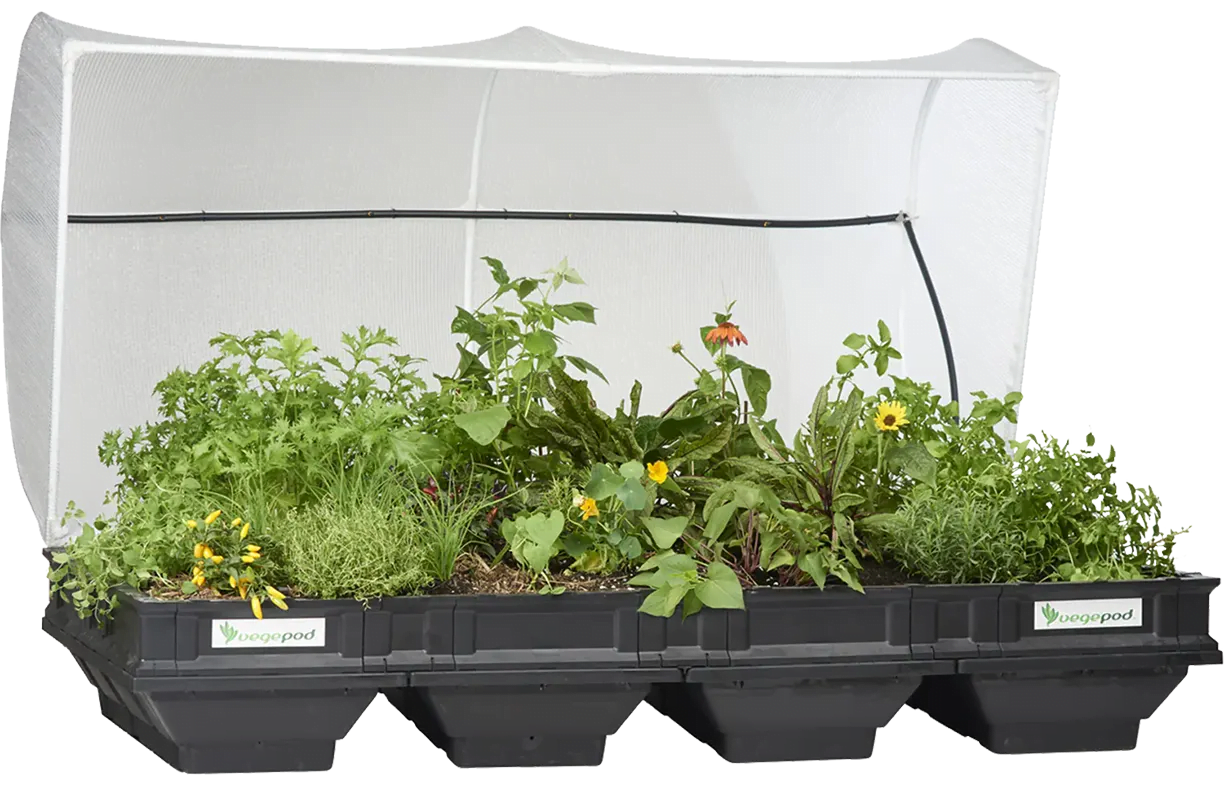 Products
Products
Product profile: Pods for veggies
With the cost of food trending rapidly upwards, the move to growing food at home has become a popular one. While it’s easy if you have a garden, what do you do if you don’t?
Read more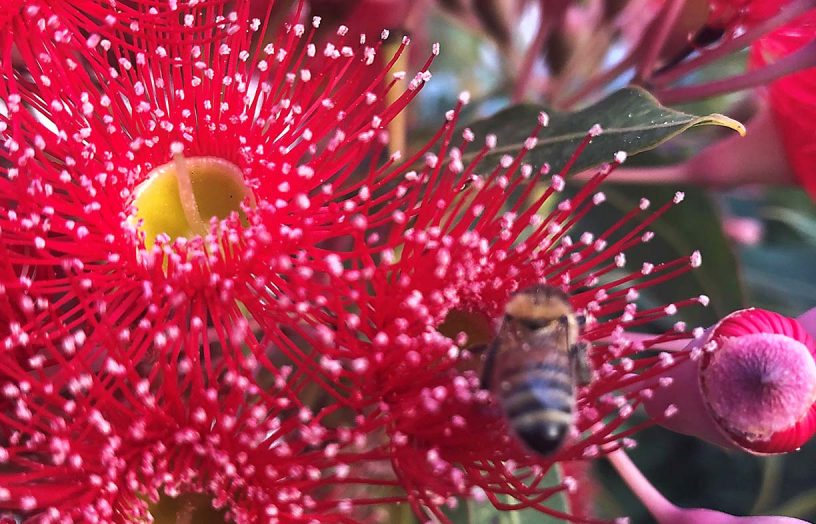 Water saving
Water saving
Nurturing your native garden
Just how much maintenance do you need in a native garden? Robyn Deed gets some tips from landscaper Haydn Barling on how to sustain a beautiful, biodiverse garden in the suburbs.
Read more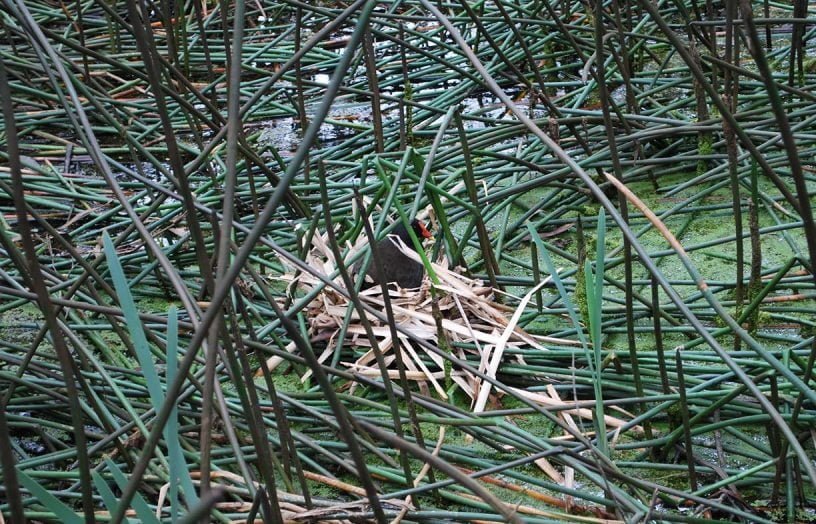 gardening
gardening
Gardening for habitat
Beauty, habitat and always more to learn: there’s a lot to be said for bringing a bit of the bush into the suburbs. Bill Aitchison and Sue Guymer describe their Australian native garden in Melbourne’s east.
Read more

